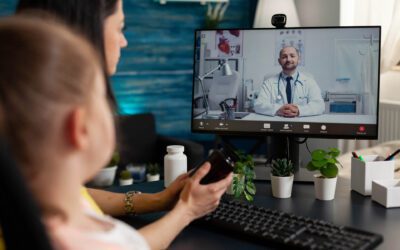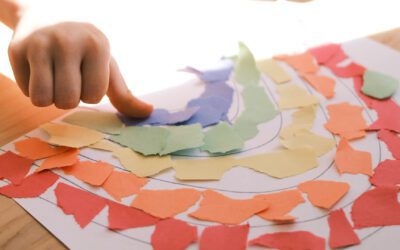As a parent, one of the most significant milestones in your child’s life is potty training. It’s a crucial step in their development that requires patience, consistency, and understanding.
However, figuring out whether your child is ready for potty training can be a daunting task. You may be asking yourself questions like, “What are the signs of readiness?” “What’s the best way to potty train my child?” and “How long will it take?”
At Always Keep Progressing, we are dedicated to helping your child reach milestones and accomplish goals that are tailored to their needs and interests. With your help, we can ALL support your child as they navigate their way through the process of potty training. In this comprehensive guide, we’ll take a closer look at the signs of readiness, the different methods of potty training, and tips to make the process as smooth as possible. By the end of this article, you’ll have a better understanding of whether your child is ready to take on this big step.
On this page:
- Is Your Child Ready?
- Preparing
- Survival Tips
- How Can Always Keep Progressing Help?
- What Always Keep Progressing Will Need From You
- Resources and helpful information
Is Your Child Ready?
Before you begin potty training your child, you need to ensure that they are ready for it. Potty training too early can be stressful for both you and your child, leading to frustration and setbacks. Here are some signs that your child may be ready for potty training. At Least 2 Should be Present!
- Pulling at their wet or dirty diaper
- Hiding to pee or poop
- Showing interest in others’ potty use, or trying to copy their behavior
- Keeping a dry diaper for longer than their normal time (1-2 hours+)
- Waking up from a nap with a dry diaper
- Trying to communicate that they are about to go, are going, or have just gone in their diaper
- Being able to follow simple instructions such as “sit on the toilet”
Questions to Ask Before Starting the Process:
If these signs are present, then the next step is to ask yourself these questions.
- Does your child know the difference between wet and dry?
- Can they sense when they need to go?
- Can they stay dry for at least 1 hour?
- Can they find their way to the bathroom and the toilet?
- Are they capable of reaching the toilet in time (perhaps with help)?
- Can they undress/dress themselves, or are they ready to begin learning how to?
- Are they motivated at some level to take this next step?
Preparing Yourself and Your Child for Potty Training
Potty training is a significant milestone in a child’s development, and it can be an exciting yet challenging time for both the child and the parents. As a parent, it’s important to prepare your child for this process to make it as smooth and stress-free as possible. However, knowing how to prepare your child for potty training can be daunting, especially for first-time parents. So here are some practical tips on how to prepare yourself and your child for potty training.
How to Prepare Your Child
- Practice walking to/from the bathroom, allowing them to explore the space
- Desensitize them to the feelings of wearing pull-ups and underwear
- Dress them in clothing that is easy to take off, such as pants with elastic waistbands
- Practice having them pull their pants up and down, helping when needed
- Practice getting on and off the toilet
- Build their toilet sitting tolerance—start small, but aim for one time an hour
- Read books, listen to songs, and watch fun videos centered around potty training
- Expose them to the environment—practice flushing the toilet, washing their hands, using the hand dryer, using toilet paper, etc.
- Desensitize them to being wet— get their socks/pants/shirt/hands/feet wet
- Make the environment friendly for them—soft lighting, a comfortable temperature, cushioned toilet seat, soft toilet paper, etc.
- Help them get excited about this next chapter—share your excitement with them becoming a “big kid”
How to Prepare Yourself
- Try to track when they typically go in their diaper, so you learn when they go. This will help you spot signs easier, while helping them connect with their body.
- Check their diaper once an hour, and offer one-word comments when they are wet (ex. WET!”)—once you change their diaper, say “DRY!”
- If non-verbal/use sign language/etc., use a special gesture for wet/dry/need to go/etc.
- Begin the process when you and your child can be fully committed, such as over school vacation or the weekend.
- Focus on one skill at a time—it may be difficult to potty train while they are also being weaned off the pacifier, for example.
- Discuss your plans and protocols with any other caregivers, teachers, therapists, etc. so that everyone is on the same page
- Remember that accidents are expected—it will take time, practice, and consistency for your child to learn how to recognize and control their body’s signals
- Come up with a reward system that is appealing to your child, and easy for them to understand. Plan which behaviors will be rewarded, and with what reward. To implement this, ask them “do you need to pee?” and then wave the “pee reward” in front of them.
Survival Tips
Potty training can be a challenging process, but with the right mindset and approach, it can also be rewarding. Here are some tips to help make potty training a success:
- Break the process into small parts, making sure to teach each step thoroughly
- Focus on success! Empower them through every step of the process, no matter how small it may seem.
- Give descriptive praise, such as “Great job sitting on the toilet”, to help them recognize what they were successful at
- Give physical rewards, such as stickers, when they attempt or complete steps
- Give nonverbal praise, gestures, or signs, such as clapping and big smiles to show them how proud you are when they attempt or complete steps
- Avoid bottoms with buttons, ties, zippers, etc., as these are more difficult for children to pull up and down.
- Use positive words—avoid words like “dirty” or “gross” as your child may think that you are talking about them
- Use common bathroom language to avoid confusion when in other environments, such as at AKP and school
- Let them observe you while using the bathroom—express happiness after you have gone and pulled up your pants
Still concerned? Always Keep Progressing Can Help
If you have read all these tips and you are at all concerned that your child is still not physically ready to potty train, please get in touch with us to schedule an evaluation and assistance. Always Keep Progressings specialists can help your child with:
- Practice navigating their way to the bathroom
- Become less averse to being wet
- Become desensitized to the bathroom environment
- Practice communicating their need to use the bathroom (verbal, nonverbal, gestural, etc.)
- Practice pulling pants up and down
- Become desensitized to the feeling of wearing underwear/new fabrics
- Get accustomed to following a schedule
- And more!
What Always Keep Progressing Will Need From You To Start Potty Training
To best help you and your child we will need some information from you. So before making an appointment with Always Keep Progressing, try to make notes and keep a record of the following:
- A general schedule of when your child typically goes to the bathroom
- What words are you using when talking about using the bathroom?
- Are you using pull ups or underwear?
- Does your child show any signs that they need to use the bathroom? (wiggling, standing in a corner, etc.)
- How do they react when they have an accident?
- Is your child nervous about certain aspects of potty training? (ex. toilet flushing)
- Are there certain steps that your child can do independently?
- If your child has a poop accident, should we send the soiled underwear home? Or simply throw them away
- Does your child get a reward for using or attempting to use the bathroom? If so, what is the reward?
This all helps us ensure we are on the same page which is crucial to developmental improvements.
Material Items We Need From You
When attending a potty training appointment at Always Keep Progressing, or any other clinic, you will normally be asked to bring the following:
- Extra pull ups or underwear for each session
- Extra shirts, pants, and socks
- Wipes
- Reward items that you use to motivate your child
- Gallon Ziploc bags for soiled clothing
Helpful Resources and Information on Potty Training
Tools that may help while potty training:
- Potty chair (portable) or potty training seat (connects to toilet)
- Sticker chart to motivate and track successful aspects of training
- Potty Books and videos
- Step stool to help them reach the potty and sink
- Potty timer to remind your child it’s time to use the potty
- Nighttime potty training underwear
Info and tips on readiness:
- When To Start Potty Training (Pull-Ups, 2023)
- Is My Child Ready to Potty Train? (Peejamas, 2020)
- Tips & Advice (Pull-Ups, 2023)
Info and tips on potty training children with special needs:
- Potty Training Children with Special Needs (Healthy Children, 2022)
- Toilet Training: Autistic Children (Raising Children, 2021)
- 8 Potty Training Tips for a Child with Sensory Processing Disorder (North Shore Pediatric Therapy, 2022)
- Toilet Training Guide for Young Children with Special Needs (New York Center for Infants and Toddlers, 2019)
Tips and essentials for the training process:
- Toilet Training: A Practical Guide (Raising Children, 2020)
- How to Talk About Toileting: Terminology (Sonnet Montessori & Child Care, 2023)
- The Essential Items for Potty Training (Parents.com, 2022)
- Toilet Training While in Preschool? Communication is Key! (North Shore Pediatric Therapy, 2022)




0 Comments